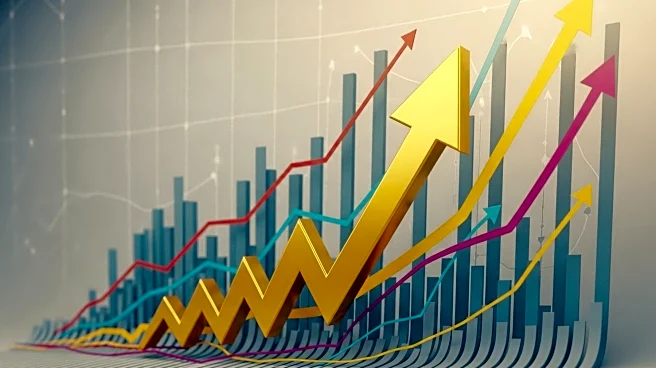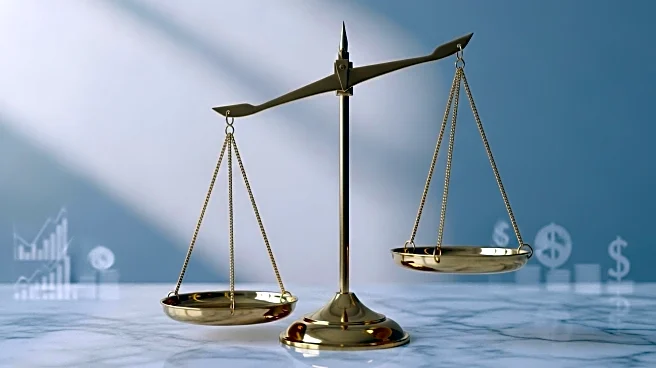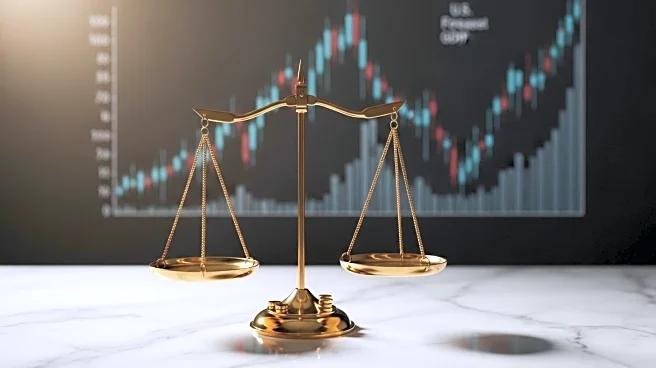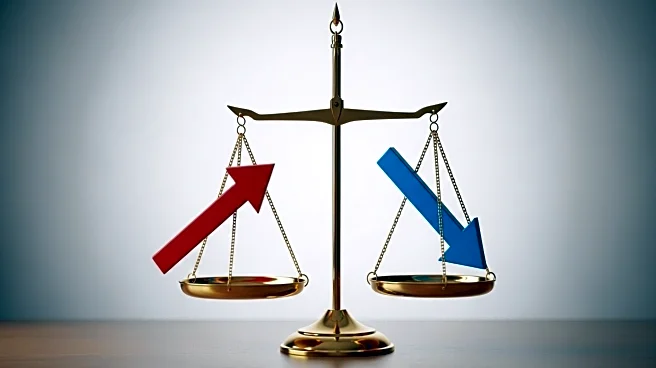What is the story about?
What's Happening?
The U.S. economy grew at an annualized rate of 3.8% in the second quarter, marking the fastest pace in nearly two years, according to the Commerce Department. This growth was driven by strong consumer spending and business investment, alongside a sharp contraction in the trade deficit. The revised GDP figures reflect a significant rebound from the first quarter's decline, which was influenced by a surge in imports due to trade policy uncertainties. The data suggests that the current level of Federal Reserve interest rates is not hindering economic growth or the labor market.
Why It's Important?
The robust economic growth challenges the need for further interest rate cuts by the Federal Reserve, despite recent actions to stimulate the economy. The data highlights the resilience of the U.S. economy in the face of trade policy uncertainties and tariffs imposed by President Trump. The strong performance in consumer spending and business investment underscores the economy's underlying strength, although job growth has slowed due to immigration policies and trade tensions. The revised GDP figures provide a clearer picture of economic health, influencing policy decisions and market expectations.
What's Next?
Economists anticipate a slowdown in economic growth in the second half of the year, with forecasts suggesting a full-year growth rate of about 1.5%. The Federal Reserve's future interest rate decisions will be influenced by ongoing economic indicators and trade policy developments. Stakeholders will be closely monitoring consumer spending and business investment trends, as well as the impact of tariffs and immigration policies on job growth. The upcoming GDP estimates and labor market reports will provide further insights into the economy's trajectory.
Beyond the Headlines
The economic growth figures highlight the complex dynamics of trade policies and their impact on the U.S. economy. While tariffs aim to protect domestic industries, they can lead to increased costs and inefficiencies, affecting consumer prices and business operations. The unpredictable nature of tariff impositions has contributed to business uncertainty, impacting hiring and investment decisions. The broader economic narrative underscores the challenges of balancing protectionist policies with economic growth objectives.
AI Generated Content
Do you find this article useful?














